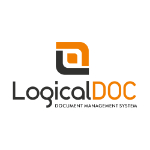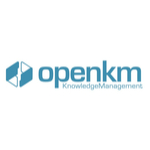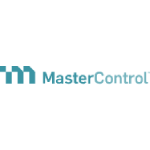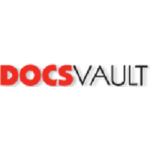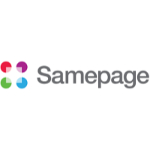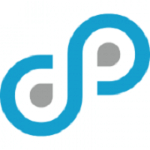List of Best Document Version Control Software
Showing 10 of 35 productsdMACQ Enterprise Document Management System offers a comprehensive set of features that bring together all your document and content management needs onto a unified platform...Read dMACQ DMS Reviews
LogicalDOC is a and versatile document management solution that streamlines your organizations workflow, making document storage, retrieval, and collaboration efficient and effortless. With its user-friendly interface features, LogicalDOC is the perf...Read LogicalDOC Reviews
OpenKM is a document management solution designed to streamline and optimize your organizations workflow. With its user-friendly interface features, OpenKM allows for efficient document storage, organization, and collaboration. Boost your teams produ...Read OpenKM Reviews
MasterControl is a software solution designed to streamline and enhance quality management processes. With its user-friendly interface features, MasterControl empowers businesses to achieve greater efficiency, compliance, and overall success. Whether...Read MasterControl Reviews
Document Locator is a software solution that streamlines document management processes for businesses of all sizes. With its user-friendly interface features, Document Locator simplifies file organization, retrieval, and collaboration, helping compan...Read Document Locator Reviews
Docsvault is a dynamic document management software that simplifies file organization, sharing, and collaboration. Designed to streamline workflow processes, Docsvault offers intuitive features like document indexing, search, and version control, mak...Read Docsvault Reviews
Samepage, the all-in-one collaboration tool designed to streamline communication and boost productivity for teams of all sizes. With features such as real-time collaboration, task management, and file sharing, Samepage makes it easy for teams to stay...Read Samepage Reviews
DocuPhase is a business process automation platform that streamlines and simplifies manual tasks across departments. By minimizing human error and maximizing efficiency, DocuPhase helps organizations of all sizes save time, reduce costs, and increase...Read DocuPhase Reviews
Huddle is an innovative collaboration software designed to revolutionize the way teams work together. With its user-friendly interface, real-time communication, and secure file sharing capabilities, Huddle streamlines project management and boosts pr...Read Huddle Reviews
ImageSite is a software designed to simplify and streamline your image management process. With its user-friendly interface features, ImageSite allows you to easily organize, store, and share your images in a seamless manner. Say goodbye to clunky an...Read ImageSite Reviews
- What Is Document Version Control Software?
- Top Reasons Why Businesses Need Document Version Control Software?
- What Are the Top Key Features of Document Version Control Software?
- What Are the Top Benefits of Document Version Control Software?
- What Are the Steps to Choose the Right Document Version Control Software?
- What Are the Types of Document Version Control Software for Different Industries?
- What Are the Technology Trends for Best Document Version Control Software?
- What Are the Deployment Options for Document Version Control Software?
What Is Document Version Control Software?
Document version control software allows teams to keep track of changes made to specific documents and files. It ensures that no data is lost or distorted during revisions and enables numerous team members to work on projects at the same time. It also saves past versions of documents so that they can be reverted to earlier states if necessary.
Document version management software tracks changes to documents over time by saving several versions so that users can go back and compare pre- and post-editing drafts. Document version control tools allow mistakes to be readily monitored and undone if necessary. It enables teams to work on documents concurrently and ensures that all team members are working from the same updated version of the document.
Document version management software increases efficiency by reducing the number of times a file must be re-uploaded due to an error or improper update. It also aids in document and file security by ensuring that only authorized users have access to them. The best document version control software also improves team collaboration by allowing members to debate and review changes.
Top Reasons Why Businesses Need Document Version Control Software?
1. Easier retrieval and view of documents: Document version management software enables users to quickly and easily access previous versions of documents.
2. Improved collaboration: Multiple users can collaborate and communicate on the same document at the same time. This makes collaboration and communication more efficient and manageable.
3. Reduces redundancy: All version histories, revisions, and versions are saved in a one location, eliminating the need to keep numerous copies of a document or waste time seeking for the most recent version.
4. High levels of security: All papers saved are very secure, with only those who are permitted having access to them.
5. Prevent data loss: The best document version control software can trace changes and deletions, allowing users to avoid data loss or manipulation.
6. Time-efficiency: The automation of the document version control system eliminates the need for manual activities such as printing, emailing, and faxing documents, saving users time.
7. Cost-effectiveness: In comparison to manual processes that take time to complete correctly, document version management software costs nothing, saving businesses both time and money.
8. Improved document sharing: Document version control tools allows users to share documents quickly and simply with team members from different locations as well as external partners.
9. Automated document tracking: Documents can be traced, including who published them, when they were released, and for what reason.
10. Streamlined workflow: Document version control system improves document development and review processes.
11. Automated notifications: The document version control system can send emails to users informing them of changes to documents and other actions.
12. Reports and analytics: The document version control tools can also provide activity reports and document performance to assist firms in making better decisions.
13. Mobile device compatibility: Many document version control software solutions are available for mobile devices, making it simple to access and work on documents while on the go.
14. Easy integration with other IT systems: The document version control tools is compatible with existing IT systems like as ERP and CRM.
15. Improved customer service: Customer support representatives can reply to inquiries more rapidly when they have the most recent documents in one place.
What Are the Top Key Features of Document Version Control Software?
The key features of document version control software include:
1. Version Identification and Tracking: This feature enables users to effectively manage multiple iterations of documents, each of which is assigned a specific date and can be easily retrieved from a comprehensive version history log.
2. Streamlined Collaboration: Collaborative editing of documents in real-time allows users to conveniently engage in simultaneous work, eliminating the need for manual file exchange via email and concerns around overlooked modifications.
3. Rollback Feature: In the event of an error, this functionality enables users to promptly and effortlessly revert documents to a prior iteration.
4. Security: Documents can be safeguarded by the use of internal firewalls, secure storage mechanisms, and user access control measures.
5. Automated Storage and Backup: The process of automatically archiving and backing up documents at regular periods can be implemented.
6. Electronic Signature Support: This feature enables users to securely and electronically affix their digital signatures onto documents.
7. Automated Workflows: Individuals have the ability to generate personalized workflows that encompass various activities and reminders, enabling them to be informed about necessary document updates and sharing requirements with other individuals.
8. Customizable Search and Filters: The utilization of customized search filters facilitates efficient document retrieval, hence enabling users to promptly locate the desired documents.
What Are the Top Benefits of Document Version Control Software?
1. Improved Collaboration: Document version control software facilitates collaborative work by enabling several users to make changes to files over time. Document version control tools software ensures that different versions of the document are saved, thereby creating a comprehensive record of all modifications made to the document.
This facilitates enhanced collaboration and efficiency across teams.
2. Version Tracking: Version control software for documents maintains a comprehensive record of all modifications performed, including the identification of the user responsible for each alteration. This facilitates the identification of any mistakes and enables a prompt return to a previous iteration if deemed necessary.
3. Improved Security: The best document version control software provides heightened security compared to manual document management, guaranteeing that only authorized individuals possess the ability to view and modify crucial information.
4. Streamlined Workflows: Document version control system enables teams to tailor their workflows according to their own requirements and preferences, thereby optimizing cooperation and maintaining project progress.
5. Automated Backups: Document version control software is designed to generate automatic backups of documents, hence minimizing the necessity for manual backup procedures and mitigating the potential for work loss caused by data corruption.
What Are the Steps to Choose the Right Document Version Control Software?
1. Identify your document version control needs: In order to select an appropriate software for document version control, it is imperative to commence by delineating the specific requirements for document version control.
These requirements encompass the quantity of documents necessitating management, the diverse formats and types of documents necessitating versioning, the user profiles and teams that will engage with the software, and the compliance obligations that must be fulfilled by the organization.
2. Consider the user-friendliness of the software: After determining the specific requirements for document version control, it is advisable to evaluate the ease of use of the software. Seek software that possesses a commendable user interface, characterized by intuitive navigation, menus, and several modes of access and/or cooperation.
3. Consider scalability of the software: It is imperative to take into account the scalability of the software that will be employed. Is the program capable of effectively managing a substantial volume of users and documents? Is it feasible to expand the scale of the system as the organization experiences growth?
4. Analyze the security and compliance requirements: Finally, it is vital to do an analysis of the security and compliance prerequisites that are indispensable for the software. Are there any industry-specific regulations that necessitate compliance? Do the access and collaboration functions possess a sufficient level of security?
By adhering to the prescribed procedures outlined herein, one shall possess the capacity to select the appropriate software for document version control that aligns with the needs and requirements of their own company.
What Are the Types of Document Version Control Software for Different Industries?
There exists a diverse range of document version control software options catering to various sectors, and the selection of appropriate software hinges upon the specific requirements of the respective industry.
In a general sense, the four prevalent categories of software utilized for document version control can be identified as follows:
1) Revision control systems (RCS): Revision control systems (RCS) are widely employed in commercial settings as a fundamental form of document version management software.
Revision Control System (RCS) is a comprehensive tool that maintains meticulous documentation of documents and facilitates collaborative editing and monitoring of file modifications by various users. This feature set renders RCS particularly well-suited for organizations seeking a fundamental version control solution.
2) Configuration management software (CMS): Configuration management software (CMS) is a sophisticated form of document version control system that often incorporates robust security procedures to mitigate the risk of data loss.
The best document version control software holds significant value for industries that handle confidential papers, particularly in sectors such as healthcare and banking.
3) Document management software (DMS): Document management software (DMS) is specifically engineered to streamline the intricate task of preserving and overseeing papers. This platform offers a safe means of document storage, enabling users to collaboratively manage their files within a centralized location.
This has proven to be advantageous for industries that necessitate the management of substantial volumes of data, such as legal and engineering organizations.
4) Collaborative Document Editing Software (CDE): The Collaborative Document Editing Software (CDE) has been specifically developed to facilitate real-time collaboration among users in the editing of documents.
This feature is advantageous for dispersed teams who require collaborative document editing, particularly in the context of software development teams.
What Are the Technology Trends for Best Document Version Control Software?
The optimal software for document version control should prioritize the safeguarding of documents and provide efficient retrieval processes. Additionally, it is imperative for the platform to provide functionalities that facilitate user collaboration.
Additional technology advancements in version control software encompass cloud-based storage, distributed version control, and automation capabilities. Cloud-based storage enables individuals to securely store their documents in a distant server, commonly referred to as the cloud, facilitating seamless collaboration and remote access.
Distributed version control systems facilitate the existence of different branches of the same dataset, while automation features enhance the ability of users to systematically and effectively monitor document modifications.
Moreover, it is imperative for document version control software to possess the capability of accommodating versioning in diverse formats, including HTML, PDF, Word, and others. This functionality enables many users to access and view the most up-to-date iteration of a given document.
What Are the Deployment Options for Document Version Control Software?
The available deployment methods for document version control software are primarily contingent upon the particular product being utilized. In a broad sense, it is commonly observed that the majority of document version control systems offer two deployment options:
1. On-premise deployment, where the software is hosted within the organization's own data center, or cloud deployment, where the program is hosted on third-party servers managed by the software vendor.
2. Furthermore, it is worth noting that certain software for document version control can be implemented using a hybrid cloud strategy, which involves the distribution of the software across both an organization's internal data center and an external cloud service provider.

